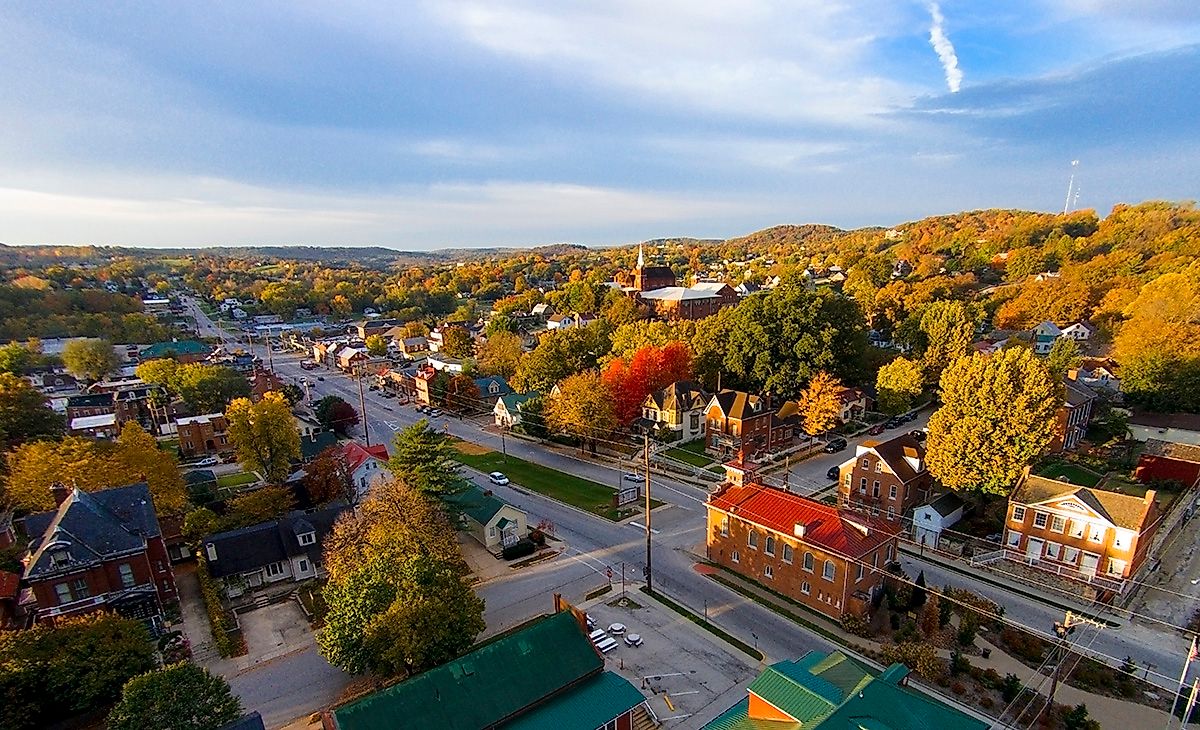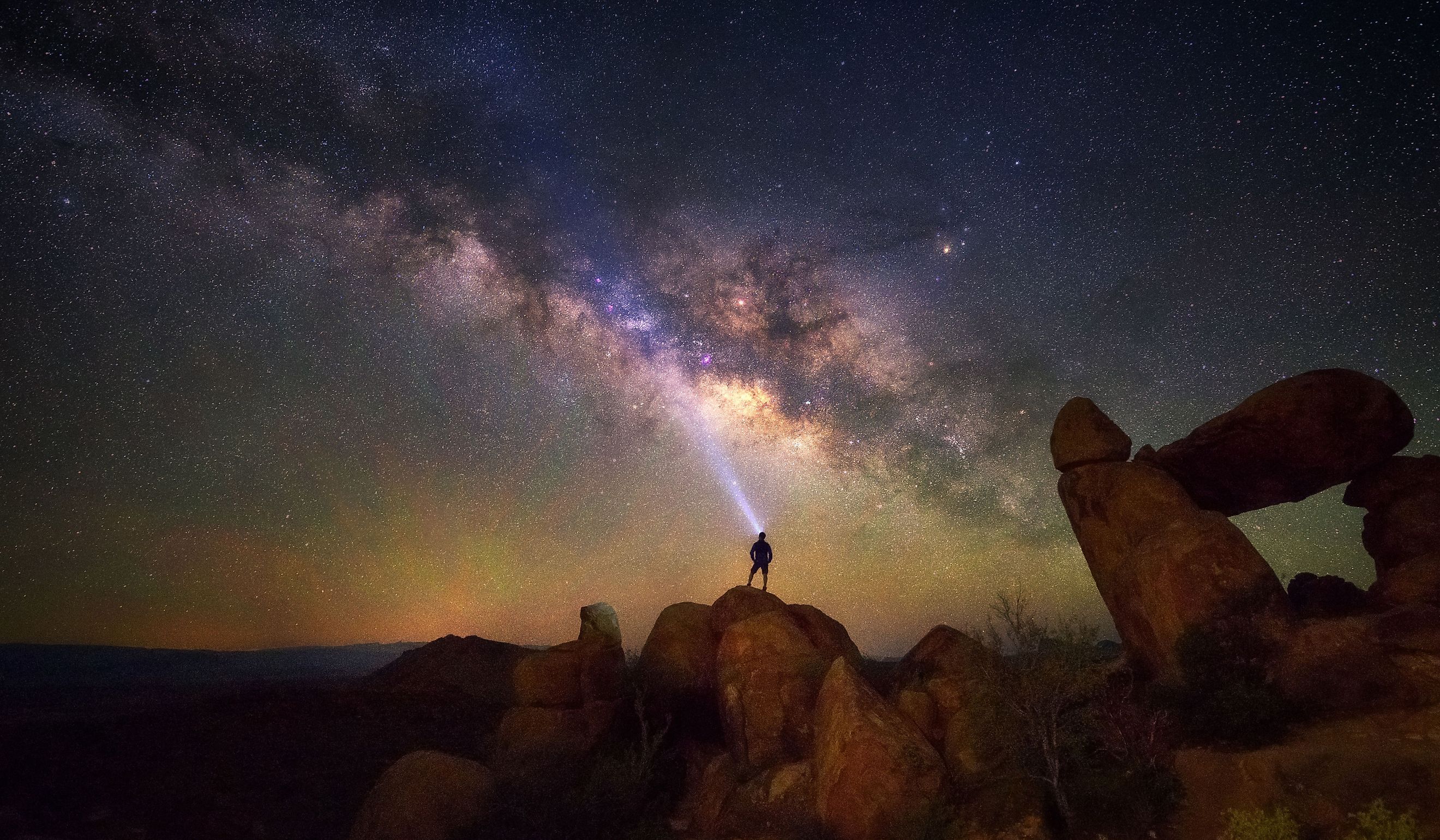
The Best US Locations for Unobstructed Night Sky Viewing
The ability to see a truly clear night sky is an underrated thing in modern times. As the bulk of us live in busy cities, increasing amounts of light pollution have obstructed our ability to see the stars every night in their full glory.
However, there still are a number of regions in the United States that have preserved the right to call themselves "Certified Dark-Sky Parks." Although the bulk of them are, by defacto, quite a distance from any major city or settlement, you will thank yourself for making time to visit one of these magnificent destinations for a nighttime trip.
First, let us start with the basics of what exactly "light pollution" is, and how a particular area can get dark-sky certified.
What is Light Pollution?
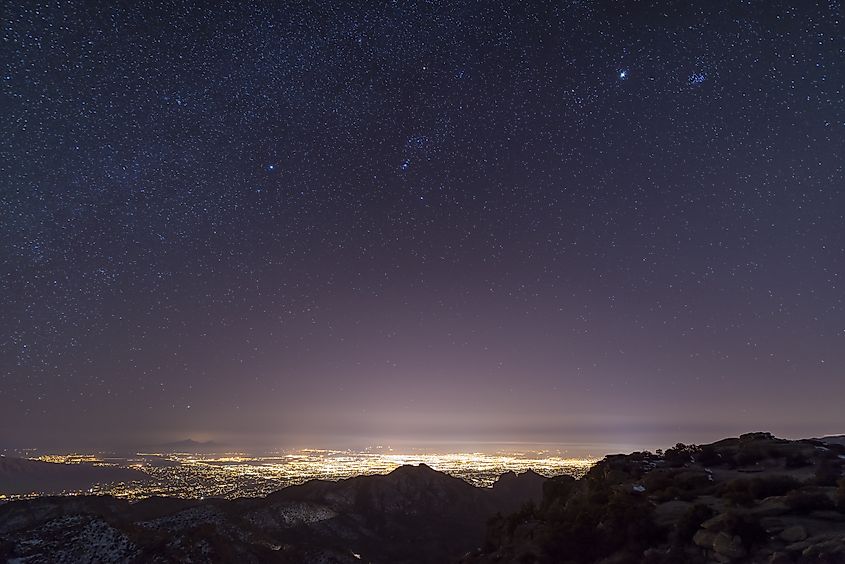
Light pollution is the excessive (or misdirected) artificial light that brightens the night sky, making it harder to see stars and natural nightscapes. If you live in a city, you have undoubtedly seen the reddish, obstructing hue the sky usually takes at night, which is caused by artificial lights at ground level.
It primarily affects urban areas, where streetlights, billboards, buildings, and vehicles emit high levels of light. This pollution has been found to disrupt ecosystems as well, altering wildlife behavior and negatively impacting nocturnal animals who obviously did not evolve to thrive in the artificially brightened environments we've created in our urban areas. Studies show that it can also affect human health by disrupting our sleep cycles and increasing stress as a result.
Light pollution is commonly categorized into types, including glare (excessive brightness), skyglow (a halo effect over populated areas), and light trespass (unwanted light entering areas where it isn’t needed).
Reducing unnecessary lighting and shielding outdoor lights can help combat this problem, an issue that some highly populated areas around the world are already beginning to address with policies to adjust infrastructure. This may include modifying streetlights and restrictions on how bright lighting, in general, is allowed to be.
What is a Certified Dark-Sky Park?
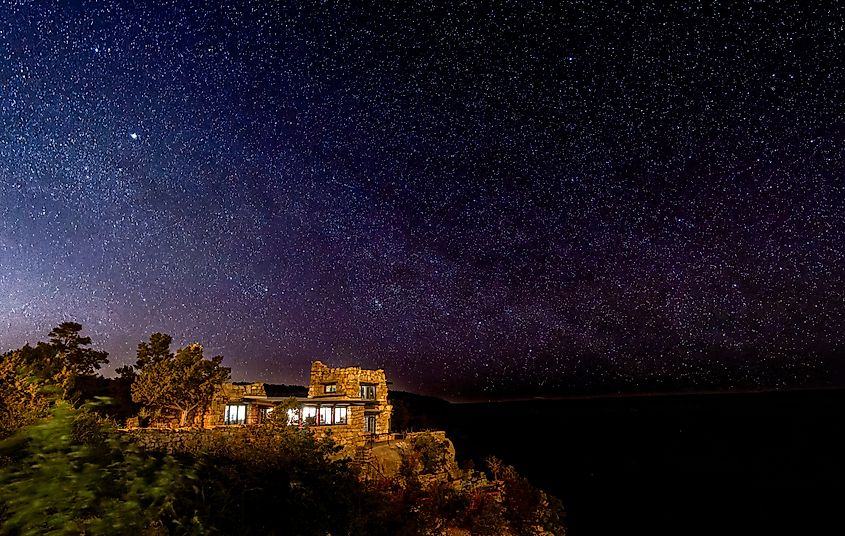
A Certified Dark-Sky Park is a designated area recognized for its exceptionally low levels of light pollution, making it ideal for stargazing and preserving natural nighttime environments. Managed by organizations like the International Dark-Sky Association (IDA), these parks meet strict criteria to limit artificial light and educate the public about the importance of dark-sky conservation.
Certified Dark-Sky Parks often enforce lighting policies, implementing things like shielded fixtures and lower-intensity lights to minimize light pollution.
Here are some of the best locations in the country to see the night sky. Whether they are officially certified or not, they all provide an escape from one of the most annoying aspects of big city life - the inability to see how amazing the cosmos we live in truly is.
Death Valley National Park, California
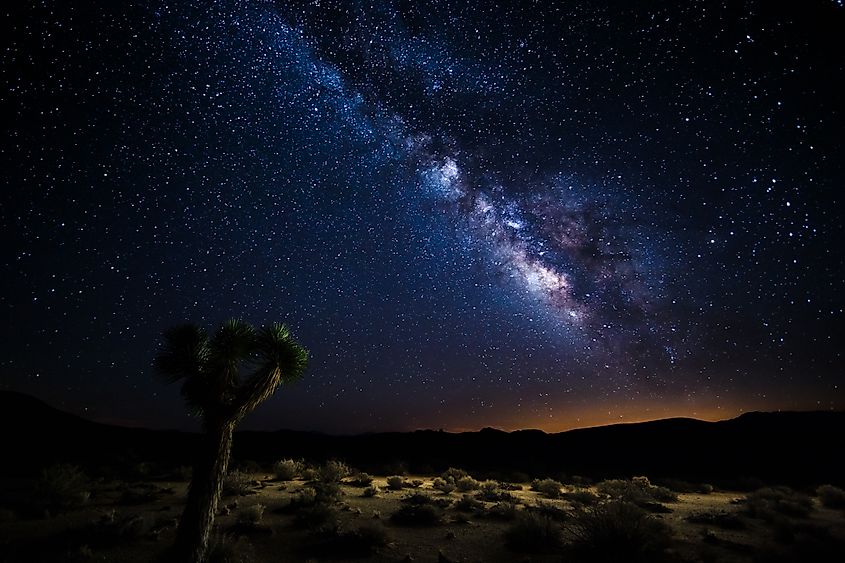
Death Valley National Park has its home in southeastern California, near the border of Nevada. With its desolate desert basin geography and sparse nearby light sources, the park provides a breathtaking way for stargazing far away from civilization, even considering the populous state it resides.
Throughout the year, Death Valley hosts specialized astronomy events that go beyond standard stargazing. Rangers and astronomers offer programs highlighting deep-space phenomena, the effects of light pollution, and tips for exploring the night sky on your own.
The barren, salt-crusted flats of Badwater Basin and the towering Telescope Peak create striking silhouettes under starlight, while the open dunes and mountain ridges add depth to every view. Whether it is night or day, Death Valley National Park is among the best spots in the nation for landscape photography, just remember to bring lots of water and sunscreen as it is one of the driest and hottest places in the world too.
Big Bend National Park, Texas
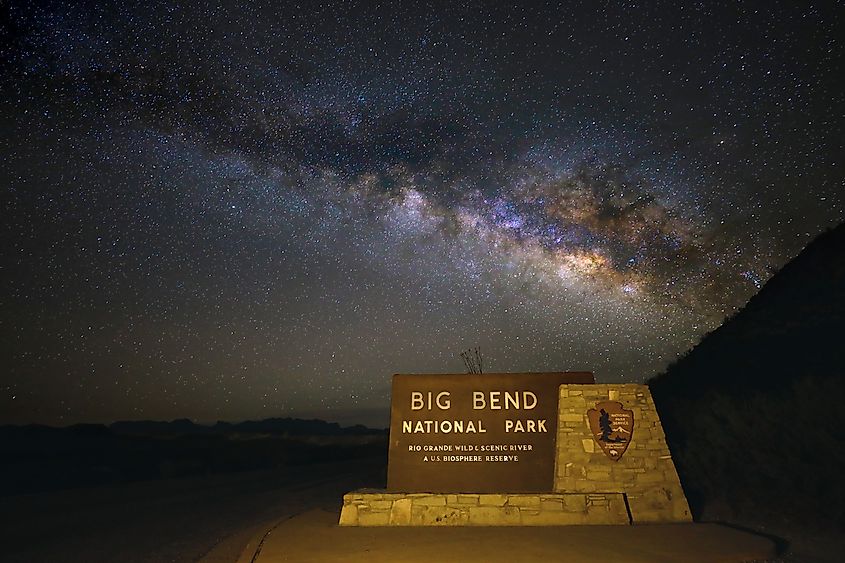
Big Bend National Park is one of the only national parks in Texas and on top of its wonderful desert landscape, it's a definite haven for stargazers and nature lovers alike. Boasting one of the darkest night skies in the contiguous United States, it has been designated as an International Dark-Sky Park since early 2022.
Big Bend's remote location near the Mexican border, minimal light pollution (again, due to the lack of any large cities near it), and wide open landscapes that lack trees or other tall vegetation that could get in the way of your line of sight create exceptional conditions for observing the stars.
Recommended spots in Big Bend to go for night sky viewing include the West Contrando Trail (more particularly its trailhead), the Hoodoos area, and Big Hill (just make sure you hike in with a flashlight; you'll thank this advice on the way back to your car).
The park actually hosts regular stargazing events, often with ranger-led programs that guide visitors through various areas of interest in the night sky, like the Milky Way, visible planets, and other celestial objects.
Big Cypress National Preserve, Florida
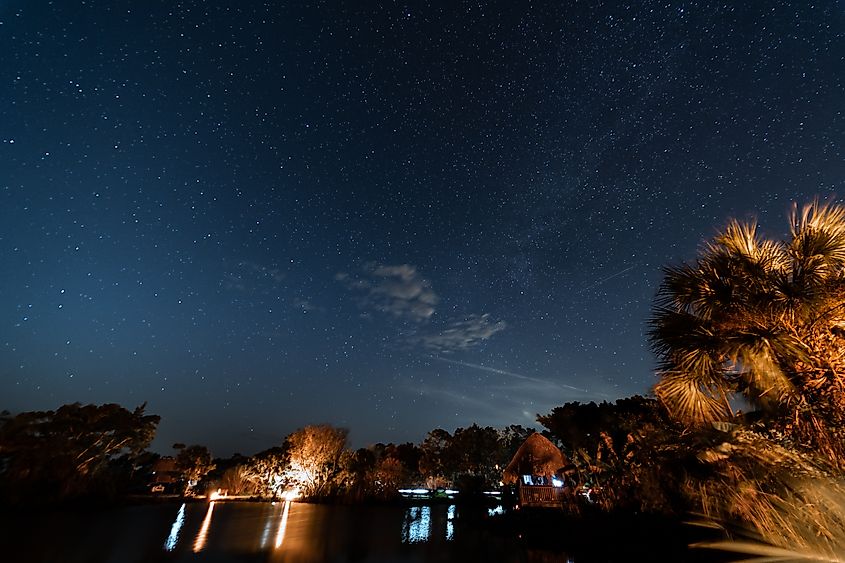
Moving onto Florida, Big Cypress National Preserve is a protected wilderness area with some of the darkest skies in the southeastern United States. An International Dark-Sky Park as of 2016, Big Cypress is ironically one of the top tourist destinations in the Sunshine State.
Located adjacent to Everglades National Park, Big Cypress is a unique dark-sky destination surrounded by dense cypress swamps, hardwood forests, and an abundance of wildlife, including American alligators!
Nighttime educational programs here sometimes feature a mix of guided stargazing events where visitors learn about the constellations above, local nocturnal ecology below, and the impact of light pollution from nearby cities like Miami and Fort Myers.
During the day, Big Cypress draws visitors to its trails, boardwalks, boating routes that are open to kayakers and canoeists, and many other fun outdoor-related activities.
Arches National Park, Utah
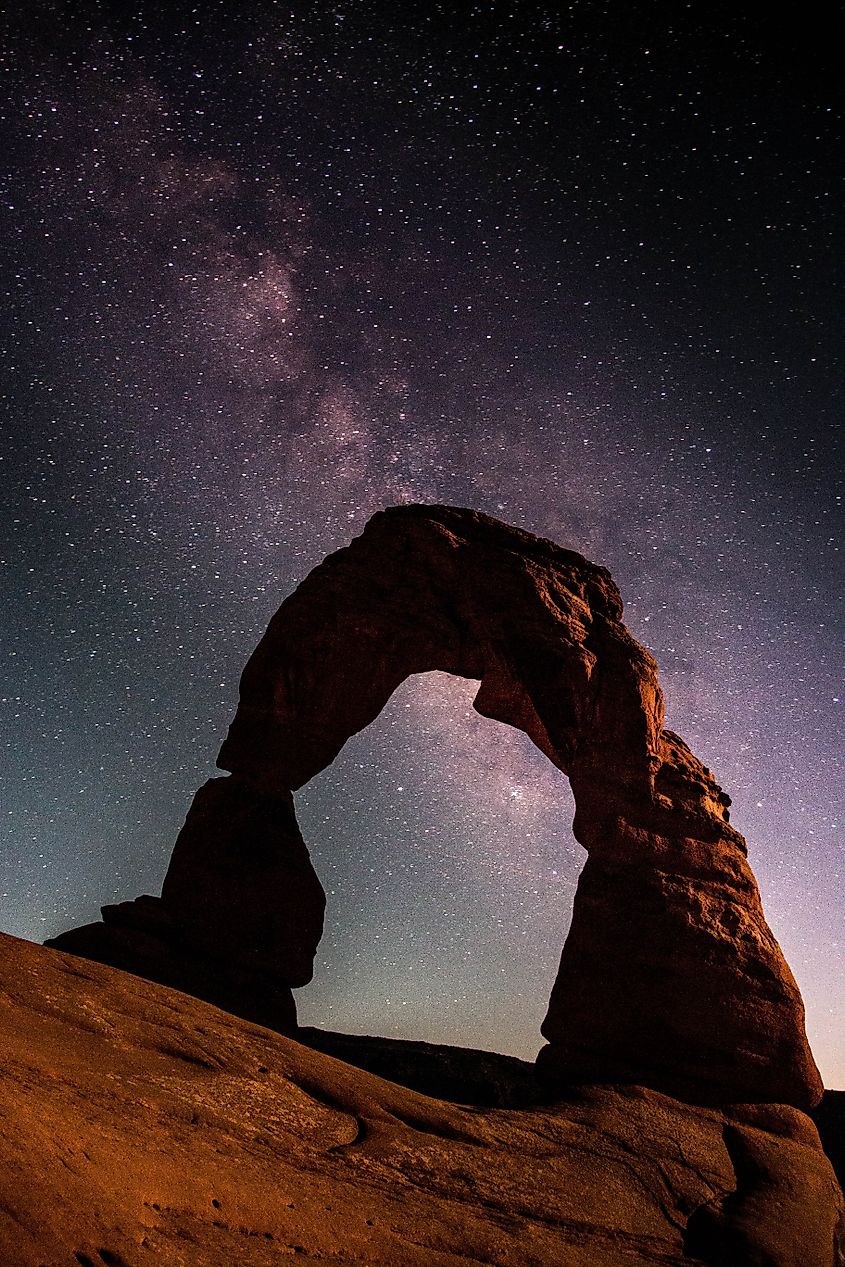
Arches National Park in eastern Utah is a mesmerizing destination for stargazing enthusiasts, celebrated for its pristine, dark skies and striking natural arches silhouetted against the stars; a real wonderland for landscape photographers.
Recognized as an International Dark-Sky Park in 2019, Arches’ remote location and strict lighting guidelines help preserve its dark skies, providing you with a rare opportunity to view constellations, planets, and the sweeping Milky Way with stunning clarity (so much so that it is often confused as a simple cloud in the sky).
Evenings in the park often include ranger-led stargazing programs led by rangers and local astronomers. These programs highlight the significance of dark-sky preservation in Utah and will help teach you a thing or two about whatever space objects are visible on that particular night. As mentioned, by night, the park’s iconic rock formations, including the Delicate Arch, create dramatic foregrounds for nighttime photography.
Moab is a small city just a short drive away and is an ideal place to stay the night. It contains a large selection of hotels, restaurants, and other amenities to help you with your trip in this very remote area of the country. The park itself also has a number of campgrounds, should you want to sleep the night directly under the stars.
Voyageurs National Park, Minnesota
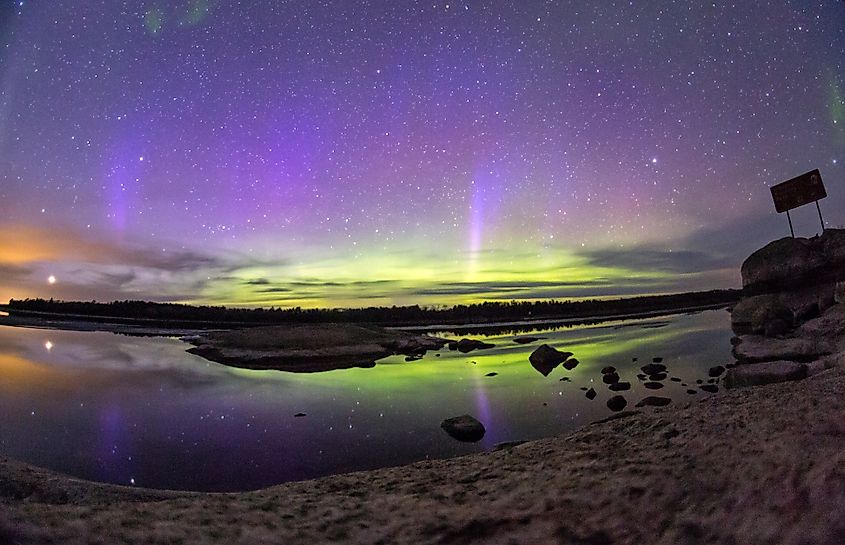
Voyageurs National Park is the only Dark-Sky Certified park in Minnesota. The far northern location of Voyageurs means visitors can see both the familiar constellations of the Northern Hemisphere and, at certain times of the year, the aurora borealis.
The park’s vast waterways and dense forests create a quiet environment for observing the stars, with clear views over the lakes and through the trees. At times, the protected waters in the park can be so still that they act as giant mirrors for the skies above at night. Whether you’re camping by the water or exploring the park’s network of quiet trails, the stillness and clarity of the night sky at Voyageurs is certainly something that should be experienced by anybody in the Midwest.
Winter hits this region pretty hard, but some actually opt to come when heavy snows are on the ground, which dulls sounds and adds to the stillness and quiet ambiance many come to Voyageurs for.
The city of International Falls, which sits right on the Canadian border, is the closest major settlement and is often used as a gateway to the park.
Central Idaho Dark Sky Reserve, Idaho
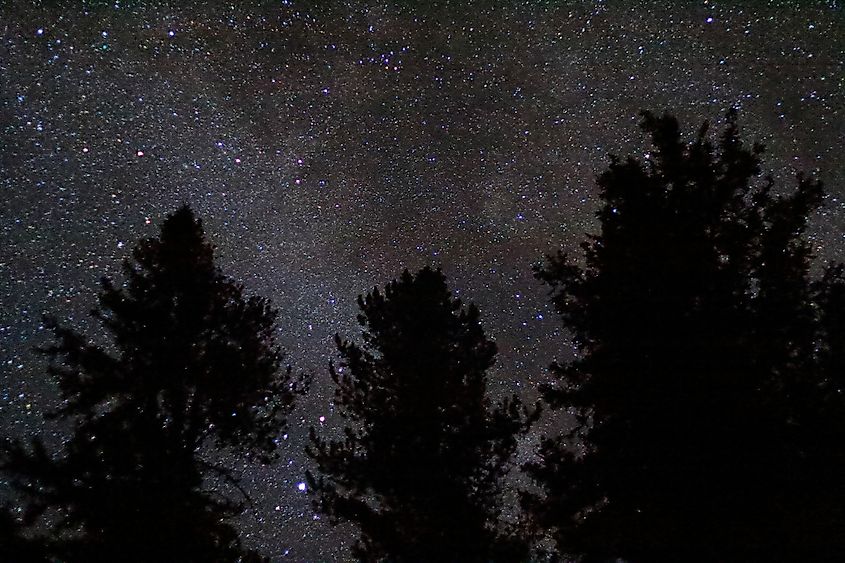
The very first dark sky reserve in the United States, the Central Idaho Dark Sky Reserve, is a vast, protected area spanning over 1,400 square miles of rugged wilderness. It was officially designated a "gold-tier" dark sky preserve in 2017 for its long-time commitment to keep its wide open skies as clear from night pollution as possible and simply for the fact that it is naturally one of the best places in the world to stargaze. With its high elevation near the Sawtooth National Recreation Area, lack of population, and clear, dry air, Central Idaho provides ideal conditions for astronomical observation.
The nearby town of Ketchum is even recognized as a "Dark Sky Community" for its own efforts to lower the impact of its artificial lighting. Located a short drive south of the actual reserve, it is also an excellent place to spend the night if you're traveling here from a distance. The park is also about a 3-hour drive northeast of Boise, Idaho's largest city and capital.







